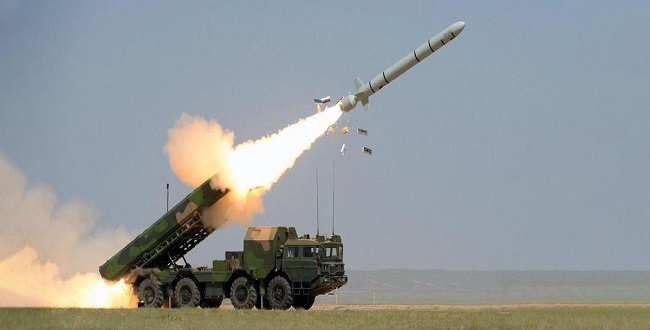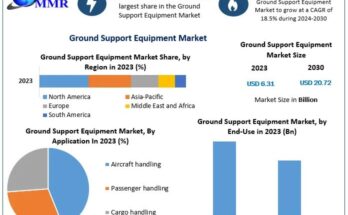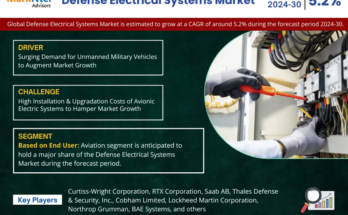The major drivers for the Global Rocket and Missile Market include increasing defense budgets worldwide and a growing demand for precision-strike capabilities in modern military operations.
According to TechSci Research report, “Global Rocket and Missile Market – Industry Size, Share, Trends, Competition Forecast & Opportunities, 2028”, the Global Rocket and Missile Market stood at USD 59.3 billion in 2022 and is anticipated to grow with a CAGR of 5.08% in the forecast period, 2025-2029. The global rocket and missile market is not only expansive but also highly dynamic, constantly evolving with advancements in technology and geopolitical developments. With the increasing demand for space exploration, defense systems, and satellite launches, this market is expected to witness substantial growth in the coming years. The rocket and missile market is primarily driven by the increasing geopolitical tensions across the world. The need for advanced defense systems and the growing military expenditures of emerging economies are other significant factors propelling this market’s growth. However, the complexities associated with the manufacturing process and the stringent regulatory scenario are challenges that the market must contend with.
This comprehensive report delves into the intricate market dynamics, analyzing key players, industry trends, and potential growth opportunities. By examining factors such as government policies, technological innovations, and market competition, it provides valuable insights for stakeholders looking to navigate and capitalize on this thriving sector.
The global rocket and missile market can be segmented by product type into ballistic missiles and cruise missiles. Ballistic missiles, which are propelled through the atmosphere by rocket engines, hold the majority market share due to the continued investment in intercontinental ballistic missiles (ICBMs) by countries like the USA, China, and Russia. These long-range missiles have the capability to strike targets thousands of kilometers away, making them crucial for national defense and deterrence purposes.The market is geographically segmented into North America, Europe, Asia-Pacific, and the rest of the world. North America, led by the USA, dominates the market due to heavy defense expenditure and technological advancements in missile technology. However, the Asia-Pacific region is projected to witness the highest growth rate, driven by increased military spending by countries like China and India.
On the other hand, cruise missiles, which are powered by jet engines and designed for precision strike capability, are anticipated to experience rapid growth. These missiles can navigate through the atmosphere at low altitudes, following a pre-programmed flight path or adjusting it in real-time to hit targets with pinpoint accuracy. The increasing demand for cruise missiles is driven by their effectiveness in engaging specific targets, such as enemy infrastructure or military installations, with reduced collateral damage.
Overall, the rocket and missile market is witnessing advancements in both ballistic and cruise missile technologies, catering to the evolving needs of modern warfare scenarios. The sustained investment in ICBMs and the rising prominence of precision strike capabilities are shaping the future of this market, with potential implications for global security and defense strategies.
Notable players in the global rocket and missile market include Lockheed Martin, Boeing, Raytheon Technologies, Northrop Grumman, and Aerojet Rocketdyne. These companies are heavily investing in R&D to develop advanced missile systems with enhanced strike capabilities.
Browse over market data Figures spread through 180 Pages and an in-depth TOC on “Global Rocket and Missile Market.”
https://www.techsciresearch.com/report/global-rockets-and-missiles-market/10588.html
The Global Rocket and Missile Market stand at the forefront of technological innovation and strategic significance in the contemporary defense landscape. This dynamic market, shaped by evolving geopolitical realities and advancements in military technology, plays a pivotal role in the defense capabilities of nations worldwide. As nations seek to enhance their security postures and address emerging threats, the demand for advanced rocket and missile systems continues to grow, marking a pivotal era in modern warfare.
Geopolitical tensions and security concerns represent primary drivers behind the sustained growth of the Rocket and Missile Market. In a world marked by regional conflicts, territorial disputes, and the emergence of non-state actors with sophisticated capabilities, nations are increasingly investing in rocket and missile systems to fortify their defense capabilities. The strategic importance of possessing robust missile arsenals as a deterrent against potential adversaries is a central theme shaping the market dynamics.
Military modernization initiatives further propel the growth of the Rocket and Missile Market, with armed forces globally prioritizing the acquisition of cutting-edge technologies to stay ahead of evolving threats. Asymmetric warfare and unconventional tactics employed by non-state actors necessitate the development of versatile and adaptive missile systems. The focus on precision-guided munitions is a key aspect of modernization efforts, aiming to optimize targeting accuracy and reduce collateral damage in military operations.
A significant trend within the Rocket and Missile Market is the increasing emphasis on hypersonic technologies. Hypersonic missiles, capable of traveling at speeds exceeding Mach 5, present a paradigm shift in missile capabilities. The pursuit of hypersonic technologies is driven by the desire to enhance strategic deterrence and introduce unprecedented rapid response capabilities. The ability of hypersonic missiles to evade traditional defense systems poses both challenges and opportunities for nations investing in these cutting-edge capabilities.
Artificial intelligence (AI) and autonomous systems are becoming integral components of rocket and missile systems, transforming them into intelligent and adaptive assets. The integration of AI enhances decision-making processes, enabling optimized trajectory planning, navigation, and improved target discrimination. Autonomous systems, driven by AI algorithms, contribute to increased accuracy and mission success rates. This trend aligns with broader developments in military technology, where AI is shaping the next generation of intelligent and autonomous weapons.
Multi-domain capabilities represent a notable trend, reflecting the recognition that modern conflicts span across land, sea, air, space, and cyberspace. Rocket and missile systems are evolving to provide integrated solutions for these diverse operational domains. This trend involves the integration of sensors, communication systems, and advanced guidance technologies to create versatile assets capable of conducting joint and coordinated operations. The pursuit of multi-domain capabilities contributes to a holistic approach in addressing the complexities of modern warfare.
Advancements in solid-state propulsion are reshaping the Rocket and Missile Market, with a shift towards more reliable, efficient, and deployable propulsion systems. Solid-state propulsion offers advantages in terms of reduced maintenance requirements, increased fuel stability, and enhanced overall system performance. The adoption of these advanced propulsion technologies contributes to the development of more agile missile designs, enabling improved acceleration and maneuverability. This trend reflects the industry’s commitment to enhancing the reliability and sustainability of missile systems.
Counter-drone capabilities have emerged as a focal point within the Rocket and Missile Market, reflecting the proliferation of unmanned aerial systems (UAS) and drones. Nations recognize the need to address the challenges posed by hostile drones, necessitating the adaptation of rocket and missile systems for effective counter-drone operations. This trend involves the integration of sensors and guidance systems specifically designed to detect, track, and neutralize drones. As drone technology becomes increasingly accessible to a range of actors, the focus on counter-drone capabilities is crucial for ensuring the integrity of airspace and protecting critical assets.
In the context of challenges, cost constraints and budgetary pressures pose significant hurdles for both governments and defense contractors in the Rocket and Missile Market. The development and production of advanced missile systems entail substantial costs, and governments, particularly those with limited defense budgets, must carefully allocate resources to balance the imperative for technological innovation with financial considerations. Streamlining production processes, pursuing international collaborations, and exploring innovative funding models are essential strategies to address these cost challenges.
The evolving threat landscape and countermeasures present another challenge for the Rocket and Missile Market. Potential adversaries continually seek ways to counter missile systems through the development of advanced anti-missile defense systems, electronic warfare capabilities, and decoy techniques. The industry must respond with innovations in missile technologies, including improved stealth capabilities, enhanced maneuverability, and advanced guidance systems, to overcome these evolving threats effectively.
International regulations and export controls represent a challenge in the Rocket and Missile Market due to the stringent measures in place to prevent the proliferation of sensitive technologies. The sale and transfer of missile technologies are subject to complex regulatory frameworks, requiring companies to navigate compliance programs and engage in ongoing dialogue with regulatory authorities. The challenge lies in balancing international collaboration and trade with the need to prevent the proliferation of missile technologies that could pose security risks.
Technological complexity and integration challenges are inherent in the development of advanced rocket and missile systems. The integration of diverse technologies, including propulsion systems, guidance technologies, and sensors, requires meticulous attention to compatibility and optimal performance. Achieving seamless integration without compromising reliability, accuracy, or security is a persistent challenge for manufacturers and defense contractors.
Ethical considerations and international relations present a unique challenge for the Rocket and Missile Market. The use of rocket and missile systems in armed conflicts or as a means of coercion raises ethical questions regarding the potential humanitarian impact and adherence to international laws. Navigating a delicate balance between meeting legitimate defense needs and avoiding contributions to situations that may lead to increased violence or geopolitical instability is an ongoing challenge for industry stakeholders.
In conclusion, the Global Rocket and Missile Market are characterized by a convergence of technological innovation, strategic imperatives, and geopolitical dynamics. The industry’s response to evolving threats, the integration of advanced technologies, and the pursuit of multi-domain capabilities underscore its crucial role in shaping the future of modern warfare. As nations continue to invest in rocket and missile systems to address security challenges, the market is expected to witness further advancements and adaptations, solidifying its position as a cornerstone of global defense capabilities.
Major companies operating in Global Rocket and Missile Market are:
- BAE Systems plc
- Saab AB
- Elbit Systems Ltd
- Raytheon Technologies Corporation
- Kongsberg Gruppen
- Israel Aerospace Industries Ltd
- The Boeing Company
- Lockheed Martin Corporation
- LIG Nex1
- Thales Group
Download Free Sample Report
https://www.techsciresearch.com/sample-report.aspx?cid=10588
Customers can also request for 10% free customization on this report
“The Global Rocket and Missile Market represent a pivotal nexus of technological advancement and strategic significance, shaping the contours of modern defense. Fueled by geopolitical tensions and the imperative for military modernization, nations worldwide invest in cutting-edge rocket and missile systems. From the pursuit of hypersonic technologies to the integration of artificial intelligence, these systems are evolving to meet diverse challenges. As multi-domain capabilities, counter-drone innovations, and solid-state propulsion redefine the landscape, the market stands at the forefront of addressing contemporary security concerns. With a commitment to precision and adaptability, the Rocket and Missile Market exemplify the dynamic intersection of innovation and defense preparedness.” said Mr. Karan Chechi, Research Director with TechSci Research, a research-based management consulting firm.
“Rocket and Missile Market – Global Industry Size, Share, Trends, Opportunity, and Forecast, Segmented By Launch Mode (Surface-To-Surface, Surface-To-Air, Subsea-To-Surface, Air-To-Air and Air-To-Surface), By Propulsion (Solid Propulsion, Liquid Propulsion, Hybrid Propulsion, Turbojet, Ramjet and Scramjet), By Region, Competition, 2019-2029”, has evaluated the future growth potential of Global Rocket and Missile Market and provides statistics & information on market size, structure and future market growth. The report intends to provide cutting-edge market intelligence and help decision makers take sound investment decisions. Besides, the report also identifies and analyzes the emerging trends along with essential drivers, challenges, and opportunities in Global Rocket and Missile Market.
Contact Us-
TechSci Research LLC
420 Lexington Avenue, Suite 300,
New York, United States- 10170
M: +13322586602
Email: [email protected]
Website: www.techsciresearch.com




